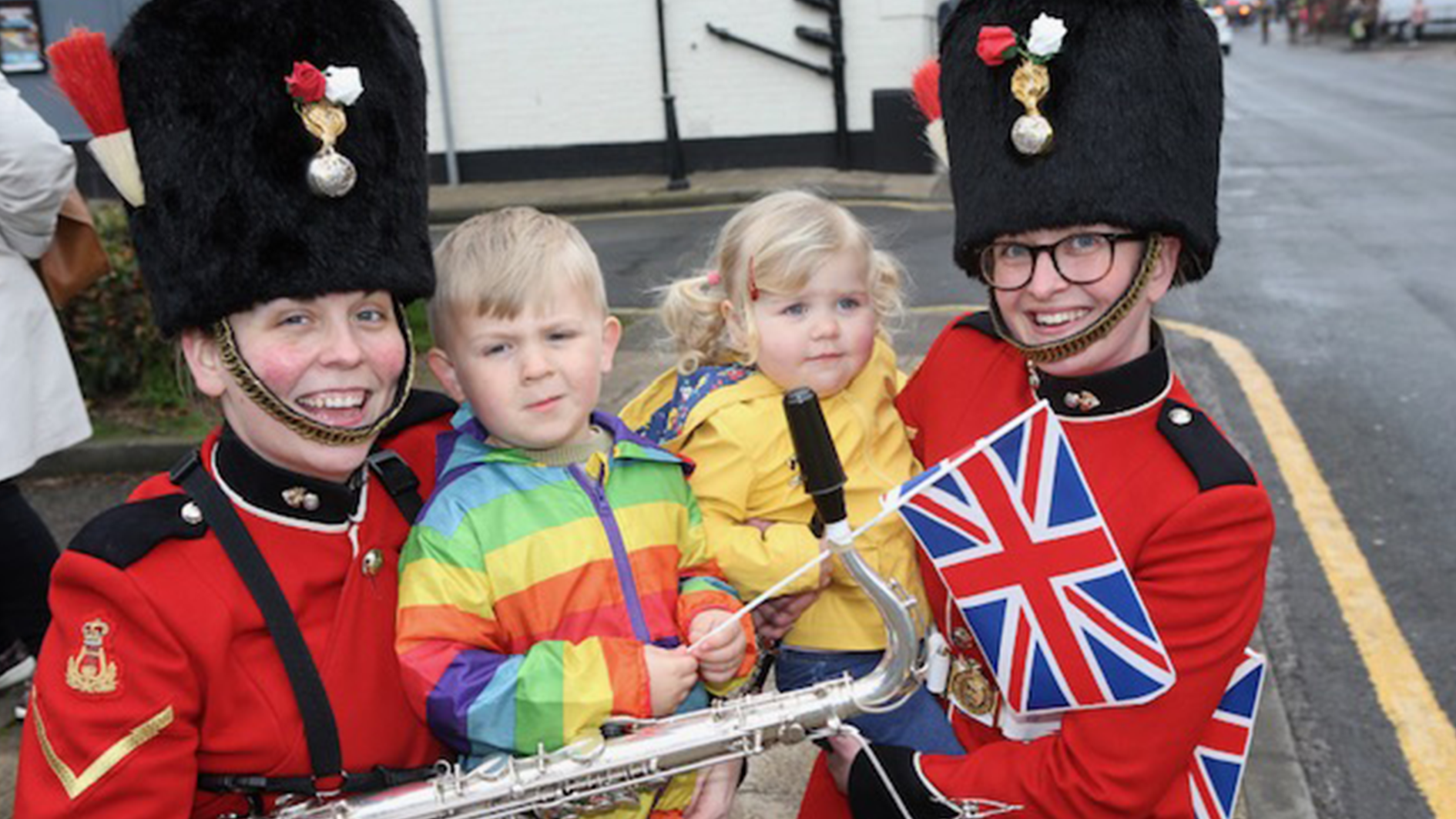
Honouring St George: British military celebrates England's patron saint

St George, the patron saint of England, has long been associated with the British military and is revered as the patron saint of soldiers.
The English have celebrated St George's Day for hundreds of years, on what is believed to have been the day of his martyrdom.
Despite never having visited England during his lifetime, St George's significance to the British military dates back centuries and continues to be honoured by soldiers to this day.
It is believed that the saint's importance to English soldiers goes as far back as 1100 when the English Army sought the saint’s protection.
Since then, the legendary dragon-slaying saint has inspired many English soldiers as they headed into battle.
The 5th Fusiliers, a reserve armoured infantry regiment celebrate their regimental day on St George's Day.
To mark both occasions the 5th Fusiliers marched through Morpeth, in Northumberland, on Saturday.
The parade marked the 55th anniversary of the regiment which was formed on St George's Day in 1968.
The 5th Fusiliers paraded their Colours in St James' The Great Church in Morpeth.
All three services have wished their English personnel a happy St George’s Day on social media.
St George's Day also marked the 60th anniversary of St George's Church RAF Halton at RAF Halton in Buckinghamshire.
A special service was held to celebrate the contribution of the church to the RAF base and the wider RAF community.
Veterans and serving personnel were also treated to a feast courtesy of The Union Jack Club.
The special 'St George's Day' three-course menu included Beef Wellington and Dragon's Blood Sauce for only £25.50.
In honour of St George's Day, Alastair Bruce, the Governor of Edinburgh Castle and former Scots Guard, tweeted images of a gold and enamel figure of St George worn by the late Queen on the day of her coronation in 1953.
The jewels are held at Edinburgh Castle and include the Collar and Great George of the Order of the Garter.
The collar is a gold and enamel necklace with garters and a red rose, while the Great George is a gold and enamel badge of St George slaying a dragon.
Both are believed to be of French craftsmanship and were likely made for King James VII.
Finally, to mark St George's Day, First World War map creators, 'A Street Near You' , has released a map showing all the Georges who died in the First World War.
The map shows more than 60,000 Georges who died in the Great War, including Midshipman George Stephenson Wingrove from Banstead, who died aged just 16 on 1 Jan 1915.







